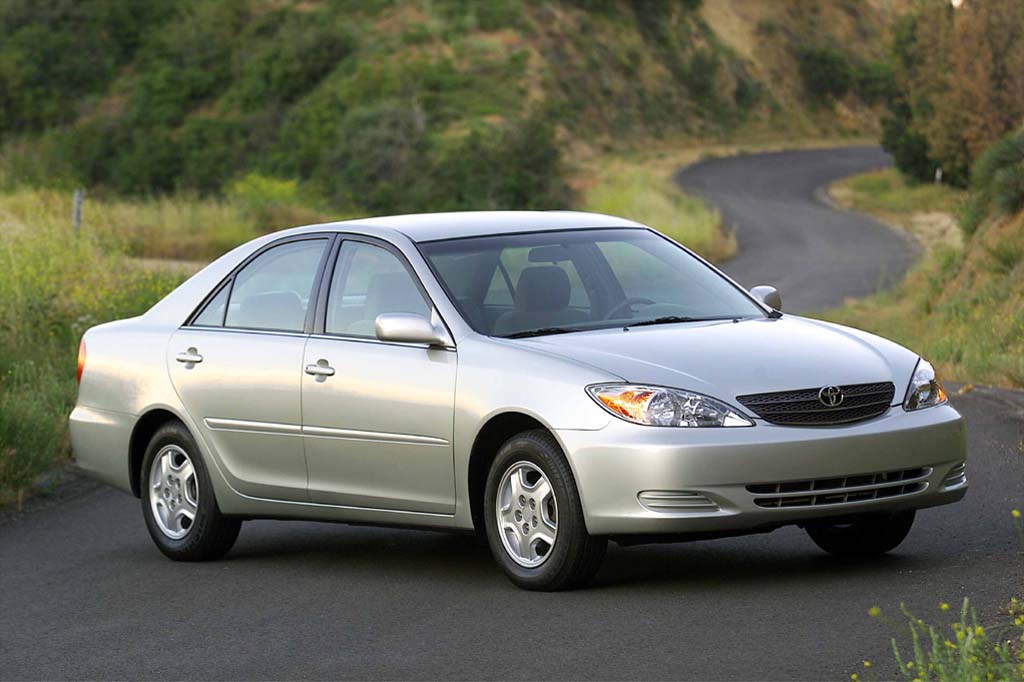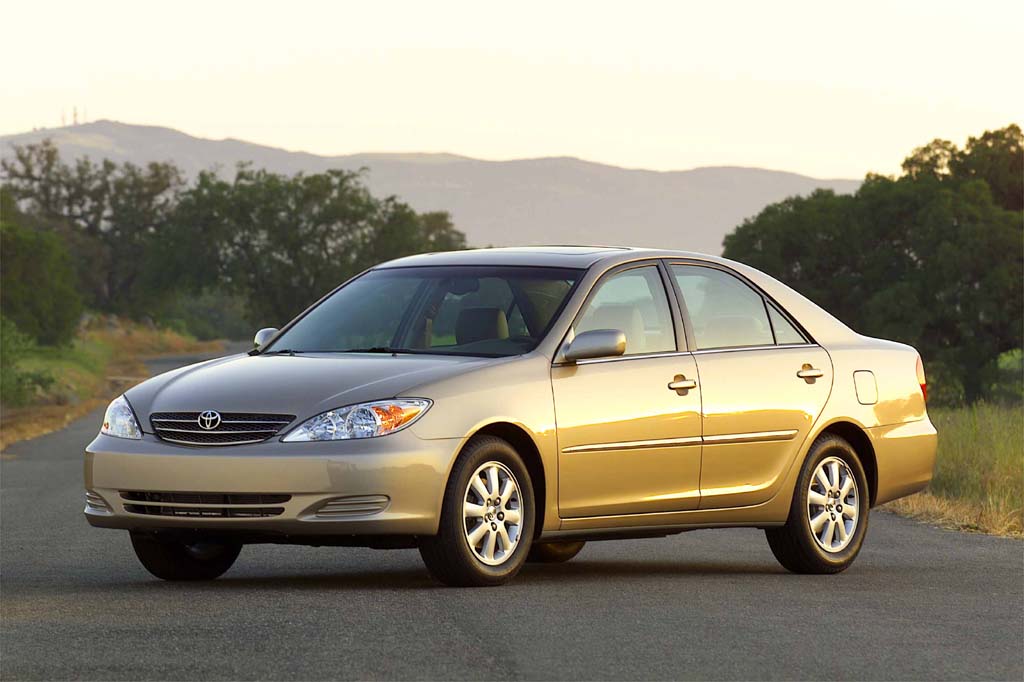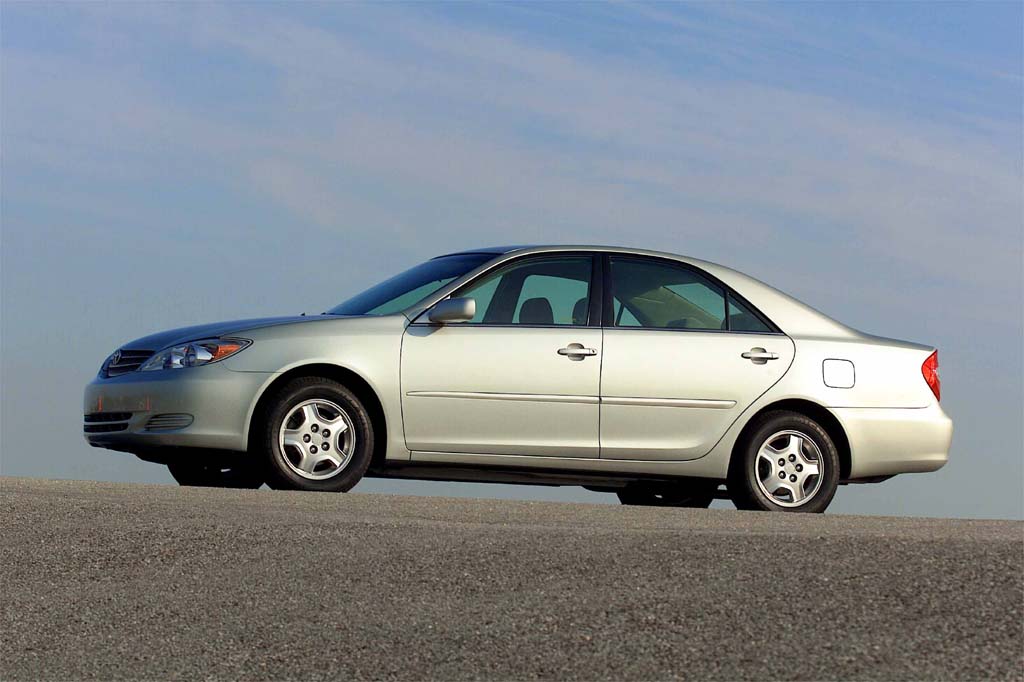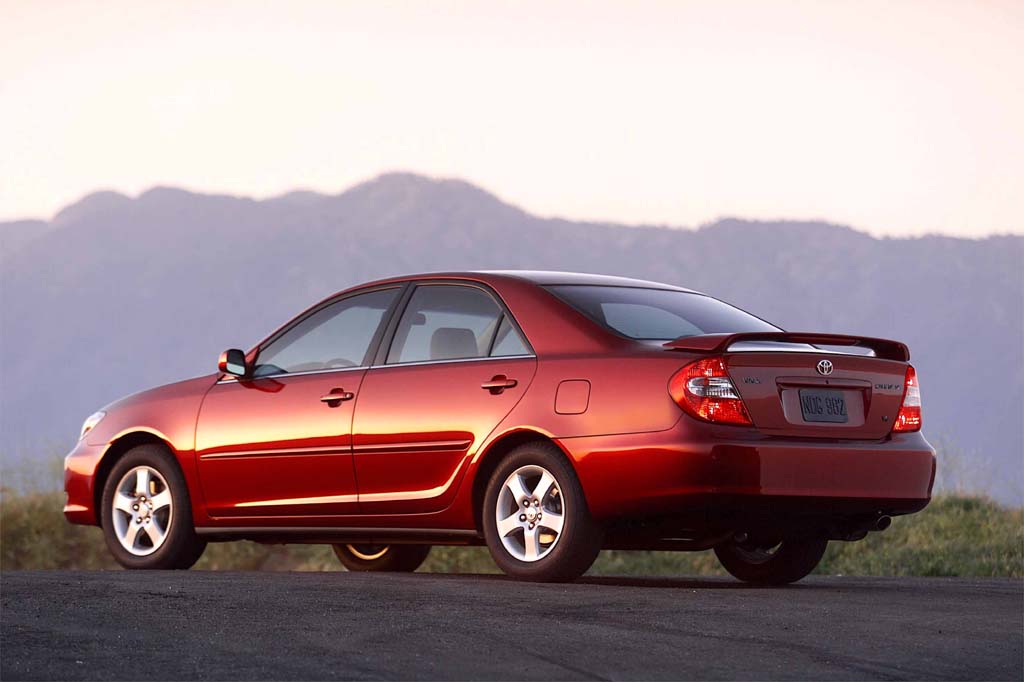| Midsize car; Built in USA |
|
|
| Good condition price range: $5,000 – $10,800* |

2002 Toyota Camry

2002 Toyota Camry interior

2002 Toyota Camry XLE

2002 Toyota Camry LE

2003 Toyota Camry SE
| Pros: |
|
| Cons: |
|
Camry’s redesign brought laudable new safety features and lifted comfort, convenience, and refinement to nearly Lexus levels. Although all these must-try midsizes still engage the head more than the heart, Toyota’s proven reliability is tough to beat. Slightly lower new-car sticker prices made Camrys an even stronger value than before, but high resale figures tend to keep used-car prices on the high side. Don’t buy a midsize car without considering Toyota’s all-around excellent family sedan.
Overview
Toyota redesigned one of America’s best-selling cars for 2002. The popular Camry got new styling, as well as a 2-inch longer wheelbase than its 1997-2001 predecessor. Slightly taller and longer overall, the front-drive midsize sedan was only a little heavier.
Base LE, uplevel XLE, and sporty new SE models were offered. Standard was a new 2.4-liter four-cylinder engine, with 21 more horsepower than the 2.2-liter that it replaced. A V6 was available on all models. All V6 sedans and the four cylinder XLE had a standard automatic transmission and antilock braking; both of those items were optional on other Camrys.
New options included front torso side airbags, and curtain-style airbags; V6 models could combine those safety features with a newly available antiskid system. Also new was an optional navigation system, with dashboard touch screen.
Standard LE equipment included air conditioning, air filtration, a tilt steering wheel, cruise control, a cassette/CD stereo, cloth upholstery, and 15-inch wheels. The SE sedan got a firmer suspension with 16-inch tires, fog lamps, rear spoiler, and special trim. Moving up to an XLE brought heated power mirrors, power front seats, automatic climate control, and a rear sunshade.
The ES 300 from Toyota’s luxury Lexus division shared the Camry’s basic new design. Rivals included the Honda Accord, Nissan Altima, and Ford Taurus.
Yearly Updates
| 2003 Camry Power-adjustable pedals were newly optional on sedans with an automatic transmission. Fog lamps became standard on the XLE model, while the LE gained standard remote keyless entry. |
| 2004 Camry In 2004, the 3.0-liter V6 available in the LE and XLE gains 18 hp, making it get 210-hp. Now available in the SE is a 3.3-liter 225-hp V6. Both mate to a new 5-speed automatic transmission this year. |
| 2005 Camry Antilock brakes are standard on all models of this popular midsize sedan for 2005, and 4-cyl versions get a new transmission. V6s come with a 5-speed automatic, which for ’05 replaces a 4-speed automatic as optional for 4-cyl models. All Camrys include ABS. It had been optional on Standard models and on the 4-cyl LE and SE, though the 4-cyl LE retains rear drum brakes, while other Camrys have 4-wheel discs. The ’05 Camrys get minor changes inside and out, including standard steering-wheel audio controls and a rear center headrest. SEs come with a specific new grille and a firmer suspension. Satellite radio joins an options list that also includes a navigation system and, for automatic-transmission models except the Standard, power-adjustable pedals. Leather upholstery is optional for SEs and 4-cyl XLEs, and newly standard for V6 XLEs. |
| 2006 Camry There were no changes for the 2006 Camry. |
